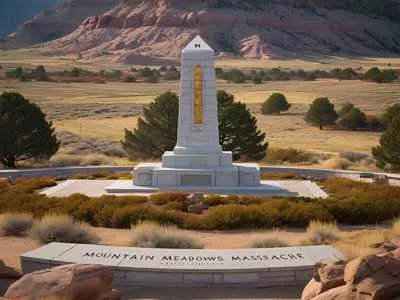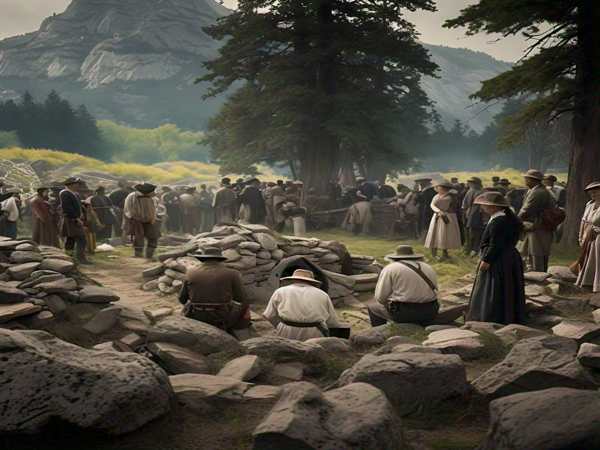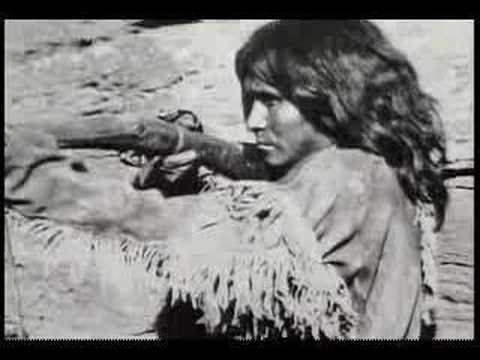The tragic story of the Mountain Meadows Massacre is one of the darkest episodes in American frontier history. Growing up, I only heard snippets of the tale from my father, who was a “gentile” in Salt Lake City. He would talk about a gruesome event in southern Utah in the 1800s where an entire wagon train was slaughtered. But as I later discovered, the real story was far more horrifying and complex.
The massacre occurred on September 11, 1857, near the town of Enterprise, Utah. It involved a group of emigrants, mostly from Arkansas, traveling westward by wagon train toward California. This group of settlers, known as the Baker-Fancher party, became victims of an unspeakable atrocity carried out by a Mormon militia, with aid from the Paiute Indians. It was a cold-blooded slaughter of nearly 140 innocent men, women, and children.
Rising Tensions in Utah
To understand the massacre, it’s important to know the tensions brewing in Utah at the time. The Mormon settlers, led by Brigham Young, were deeply anxious about the U.S. Army’s movements. There was a widespread belief that the government intended to remove Young as governor of the Utah Territory and impose martial law. This hostility was fueled further when Parley P. Pratt, a prominent Mormon leader, was killed in Arkansas shortly before the massacre. The Mormons viewed this as an attack on their faith, and their resentment towards outsiders escalated.
The Baker-Fancher wagon train, led by John Baker and Alexander Fancher, unfortunately crossed paths with these tensions. The train was relatively wealthy, with a large herd of cattle, horses, and other valuable assets, making them a target for the embittered Mormon settlers. With inflammatory sermons stirring up hatred, the Mormon militia saw an opportunity to exact revenge on what they perceived as threats to their community.
The Attack and Betrayal
On September 7, 1857, the Baker-Fancher party found themselves under siege. Disguised as Native Americans, the Mormon militia, along with some Paiute Indians, launched an attack on the unsuspecting emigrants. The emigrants formed a defensive circle with their wagons and fought off the attackers for four days, but as their resources dwindled, hope began to fade.
On the fifth day, a group of white men—members of the Mormon militia—approached the settlers under the pretense of a truce, offering safe passage to Cedar City if they surrendered their weapons. Exhausted and desperate, the emigrants agreed, not knowing that they were sealing their own doom.
The Mormons divided the emigrants into groups: the wounded were loaded into wagons, women and children were gathered together, and each able-bodied man was accompanied by a Mormon militia member. At the predetermined signal, “Do your duty,” the militia turned on the emigrants and shot the men at point-blank range. Women and children, save for those under the age of seven, were then ruthlessly slaughtered by the militia and the Paiute Indians.
The massacre left the land soaked in blood. Bodies were left to rot in the open, preyed upon by scavenging animals. The survivors—17 children who were deemed “too young to tell tales”—were taken in by Mormon families and later returned to Arkansas after being recovered by U.S. officials.

The Aftermath and Cover-Up
In the immediate aftermath of the massacre, the Mormons attempted to shift the blame entirely onto the Paiute Indians. However, as more evidence came to light, it became clear that the Mormon militia had been the masterminds behind the attack. The cover-up began to unravel when members of the Mormon community returned to Cedar City with plunder from the massacre, and the Paiutes started complaining about not receiving their promised share of the spoils.
U.S. government officials launched a lengthy investigation, but it wasn’t until 1859 that legal action was taken. Even then, the tight-knit Mormon society made it difficult to gather evidence and secure convictions. Ultimately, only one man, John D. Lee, was held accountable for the massacre. In 1877, Lee was executed by firing squad at the very site of the massacre. Bitter to the end, Lee claimed that he had been made a scapegoat for the crimes of many.
The Truth Emerges
The Mountain Meadows Massacre remained a sensitive and controversial topic for years. The Mormon Church long denied any official involvement, insisting that the attack had been carried out by rogue individuals. However, over time, the truth began to emerge through the accounts of survivors, witnesses, and descendants of both the victims and the perpetrators.
Among the descendants were those of the Baker-Fancher party and the Mormon militia members. These descendants worked tirelessly to uncover the truth and bring awareness to the massacre. Their efforts helped shed light on the extent of the tragedy and the role that religious and political tensions had played in its occurrence.
Understanding the Legacy
The Mountain Meadows Massacre left an indelible mark on American history. For many years, the Mormon Church remained reluctant to fully acknowledge the church’s role in the tragedy. But in recent years, efforts have been made to promote healing and reconciliation between the descendants of the victims and the descendants of the perpetrators.
In 2011, the site of the massacre was designated a National Historic Landmark, a solemn recognition of the lives lost and the pain endured. Today, the Mountain Meadows Association continues to preserve the memory of the victims and work toward fostering understanding between all parties involved.
The massacre remains a stark reminder of how fear, religious fervor, and political unrest can lead to unimaginable violence. For those who visit the site, it’s a place of quiet reflection—a place where untold sorrow still lingers.


